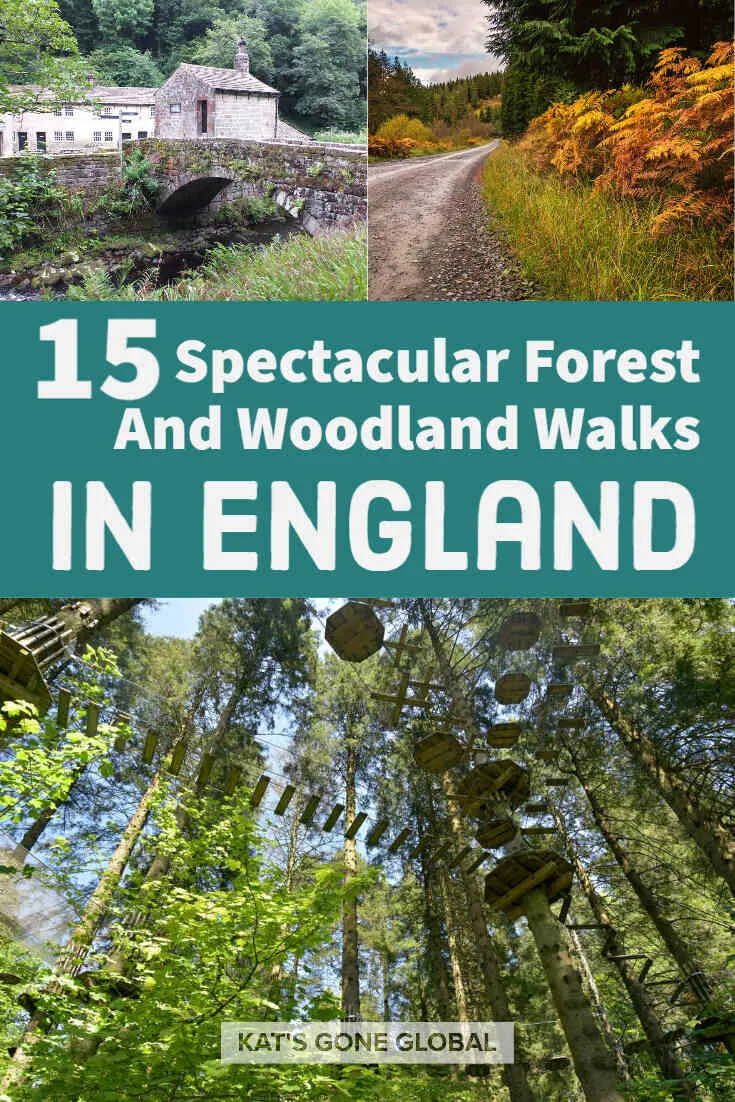England is home to some of the most beautiful and magical forests and woodlands.
From ancient trees to panoramic views, this guide will help you find the best forest and woodland walks in the country.
Wherever you live, it’s always a good idea to get out and about in nature. Spending time in nature has been proven to be beneficial for your wellbeing, particularly for your mental health.
Disclaimer: Hi! this post may contain affiliate links which will take you to online retailers that sell products and services. If you click on one and buy something, I may earn a commission, see my Affiliate Disclosure for more details.
Luckily, England has plenty of choices when it comes to forest walks.
Continue reading to discover some of the best forest and woodland walks in England.
1. Ingleton Falls, North Yorkshire
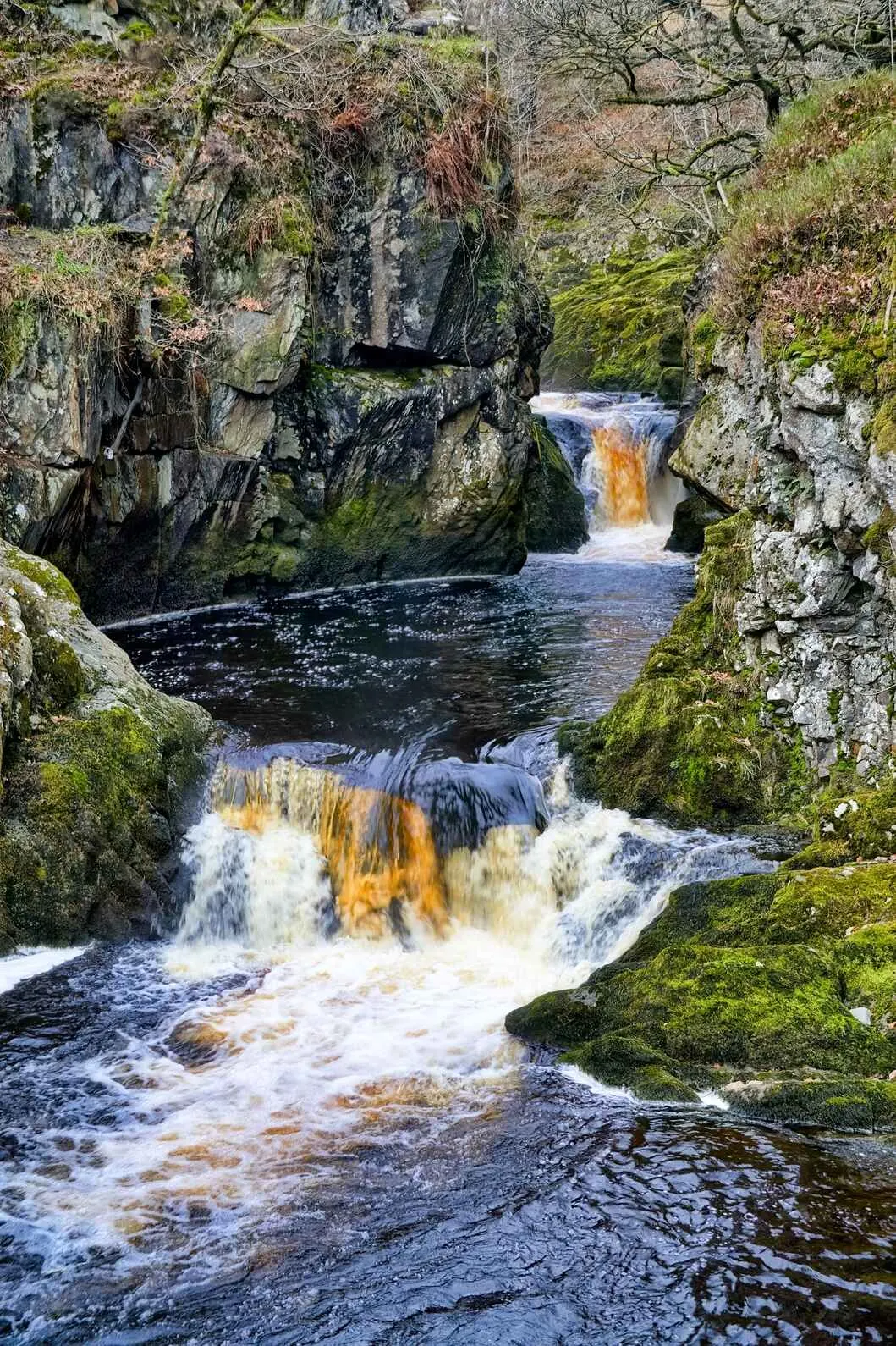
The Ingleton Waterfalls Trail is a circular route stretching for 4.5 miles and takes you through some of the best parts of the Yorkshire Dales.
Along the route, you’ll find oak woodland, a series of waterfalls, and many rare plants, birds and trees that have made their home in the ancient base rocks that form the Peak District.
These features have made Ingleton Glens a Site of Special Scientific Interest (SSSI).
The walk starts by following the River Twiss through Swilla Glen. Pass through Pecca Falls, Pecca Twin Falls, Holly Bush Spout and Thornton Force, which is the most well-known waterfall on the trail, dropping 46 feet into the River Twiss. At this point, there is a viewing area which is a great picnic or rest stop.
Continue the trail past Beezley Falls and Rival Falls, where you’ll see the River Doe plunge into a pool nicknamed the ‘Black Hole’. Make your way along the footpath to Baxenghyll Gorge and Snow Falls.
The final part of the trail goes through the charming village of Ingleton.
Website: https://www.ingletonwaterfallstrail.co.uk/
Cost: Please note there is an entry fee for this walk
2. Grizedale Forest, Cumbria

The Lake District in Cumbria is sure to make any list of best forest walks. One of the most beautiful walks in the area is Grizedale Forest, covering 9 square miles of woodland.
There is plenty to do in the forest, from walking and cycling to adventure activities like Go Ape and Forest Segway.
For the best views of Cumbria’s famous lakes and mountains, you’ll have to take on a more challenging climb.
Although it’s only 1.5 miles long, Machell’s Coppice Trail is a tough walk. It’s worth it though, as you’re rewarded with views over Coniston. Carron Crag is another difficult trail.
The climb up to Carron Crag – the highest point in Grizedale at 314 metres – takes you through woodland before offering panoramic views over the Lakeland Fells, the Howgills and Morecambe Bay.
If you prefer a less demanding climb, then there are several easier walks you can take. The Millwood Trail is a 1.5-mile-long loop which offers lovely views of Grizedale Valley.
The Ridding Wood trail is an easy, 1-mile long walk that passes through oak woodland and ornate trees.
On your walk, make sure to keep an eye out for the many sculptures which are scattered throughout the forest, which have been created by leading international artists.
Website: https://www.forestryengland.uk/grizedale
Cost: There are no costs to enter the forest but you will need to pay for parking.
3. Hatfield Forest, Essex
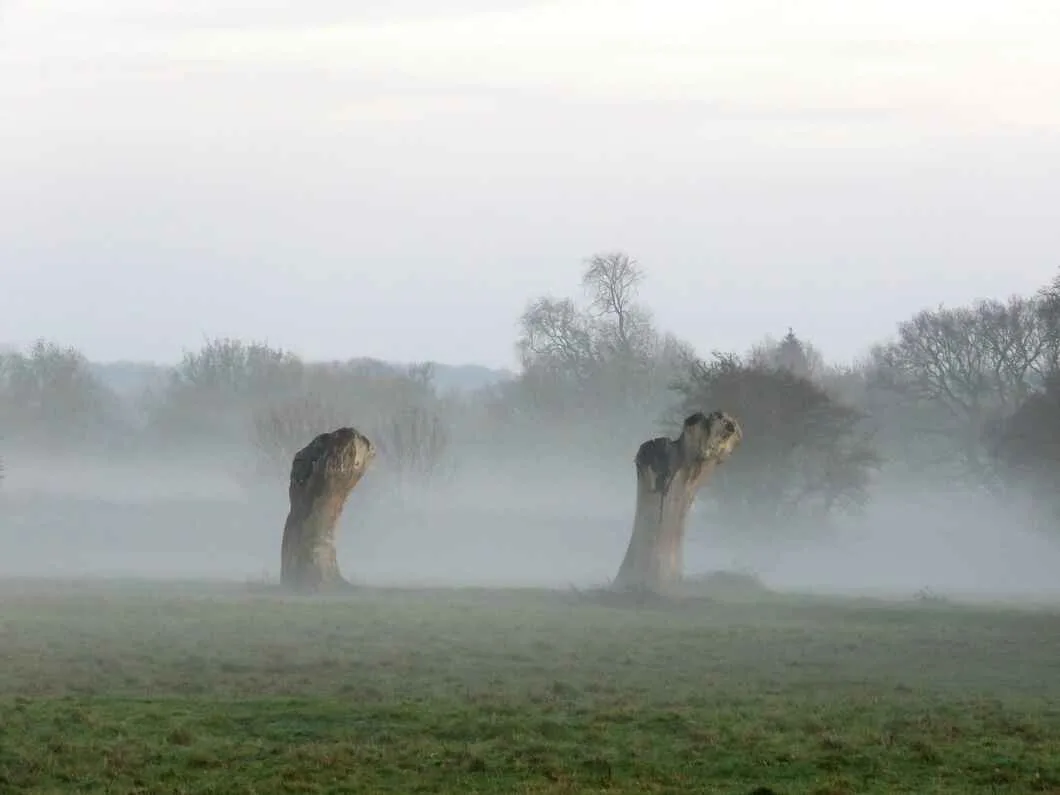
Hatfield Forest is Britain’s best surviving royal hunting forest from medieval times. Back in that period, the word ‘forest’ referred to an area of deer, rather than trees.
Today, you can still see plenty of fallow deer and muntjac deer roaming around, as well as foxes, rabbits, weasels and hedgehogs.
The forest stretches over 403 hectares and is a biological SSSI. Hatfield Forest is also renowned for its conservation work to improve the habitats of kingfishers, terns and reptiles, as well as assessing the health of the deer population and non-native crayfish.
There are a range of trails you can take to explore different corners of the forest. The Capability Brown Walk allows you to discover a series of sites that were linked to the development of the forest as a pleasure ground in the Victorian era, including a lake and an accompanying picnic area.
The Golden Boots Walk is best done in the summer, when the forest’s fields are turned golden by over 300 million buttercups. Another fantastic walk is the Flitch Way and Forest Walk.
This is a circular walk suitable for the whole family and takes you past ancient trees including the remains of the Doodle Oak – once the largest oak tree in the country. Other walks include the Tree Walk and Forest Walk.
Website: https://www.nationaltrust.org.uk/hatfield-forest
Cost: There are no costs to enter the forest but you will need to pay for parking.
4. Ashridge Estate, Hertfordshire
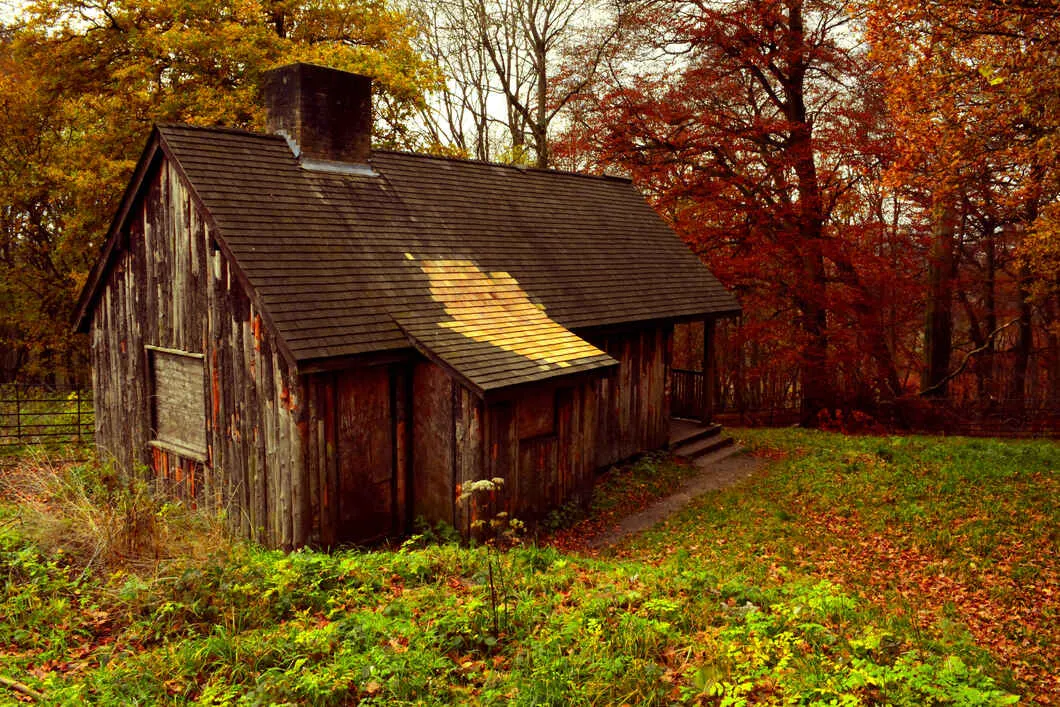
Ashridge Estate is set in 2,000 hectares of the Chiltern Hills, an Area of Outstanding Natural Beauty (AONB).
A mixture of beech and oak forests, commons and chalk downlands, the estate is a fascinating mix of landscapes teeming with wildlife.
You’ll be able to recognise the magical forest from the 2014 film Maleficent starring Angelina Jolie, which was filmed here.
One of the highlights of the estate is the Bridgewater Monument, a granite column built-in 1832 to remember the third Duke of Bridgewater who once lived on the estate.
You can climb the 172 steps to the viewing platform, and admire the scenery that stretches for miles across the Chilterns.
There are miles of footpaths on the estate that you can choose from. The Old Copse and Thunderdell Wood walk is an easy circular walk that takes you across lush meadows and through areas of woodland.
The Bridgewater Monument to Pitstone Windmill Circular Walk is a moderate walk just over seven miles long. You’ll get to see stunning views over the Chilterns and the Vale of Aylesbury.
Some of the other walks include the Trail to Golden Valley Walk, the Duncombe Terrace Walk, the Three-in-one Woodland Walk, the Boundary Trail Walk, the Battle of Berkhamsted Common Trail, the Ancient Trees Walk and the Bridgewater Monument to Ivinghoe Beacon Trail.
Website: https://www.nationaltrust.org.uk/ashridge-estate
Cost: Climbing the Monument is £2.50, however, the rest of the estate is free.
5. Eaves Wood, Lancashire
Eaves Wood is a truly magical place. From ancient woodlands, to giant beech trees, to hidden grassy glades, this forest is a fantastic place for a stroll.
The forest is filled with beautiful wildflowers like primroses and bluebells, and you might even catch a glimpse of deer through the trees.
Eaves Wood is part of the Arnside and Silverdale AONB, and there are plenty of walks in the area that include Eaves Wood in their trails, including the Silverdale Circular Walk, which takes you through Eaves Wood and onto the coastal path and Silverdale Green.
Eaves Wood is about one mile from the village of Silverdale, and there are several different entrances into Eaves Wood.
On your walk, make sure to climb to the top of King William’s Hill. Here you can admire the views over to the Yorkshire Dales and Bowland Fells.
Visit the Pepperpot, which is a peculiar little monument built to commemorate the Golden Jubilee of Queen Victoria.
Website: https://www.nationaltrust.org.uk/arnside-and-silverdale/features/eaves-wood
Cost: No cost
6. Cardinham Woods, Cornwall
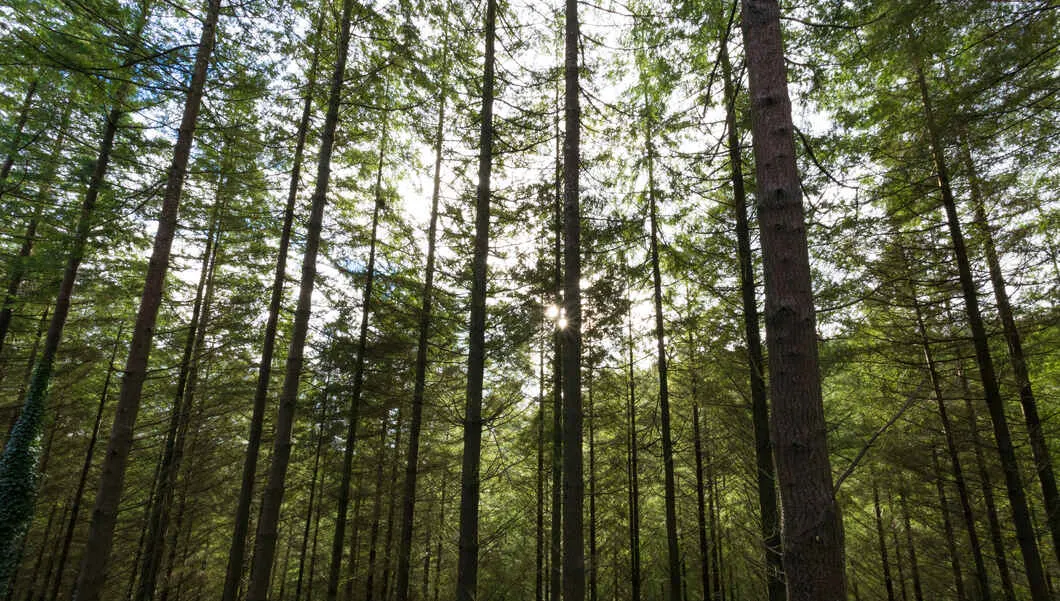
One of Cornwall’s hidden gems, Cardinham Woods is a wonderful spot to immerse yourself in nature.
The woodland is nestled in a beautiful valley and is filled with babbling brooks, secret glades and viewing points.
There are four walking trails here, and most of them are easy to access. They’re all well maintained and easy to navigate.
The Callywith Wood Walk takes you to a viewpoint where you can trace the valley of Cardinham Water back up to its source on Bodmin Moor.
The Deviock Walk is a long loop with only one steep section as you make your way down the valley side – but don’t worry, the picnic area at Scots Pine is worth the walk.
The Lady Vale Walk tracks the river upstream to Lady Vale Bridge and is one of the most scenic routes in the woods.
Wheal Glynn is a harder walk, with a steep ascent to the old lead and silver mine of Wheal Glynn.
Website: https://www.forestryengland.uk/cardinham-woods
Cost: Parking for 2 hours is £2 and all day is £5. There are no other costs to enter the park.
7. Kielder Forest, Northumberland
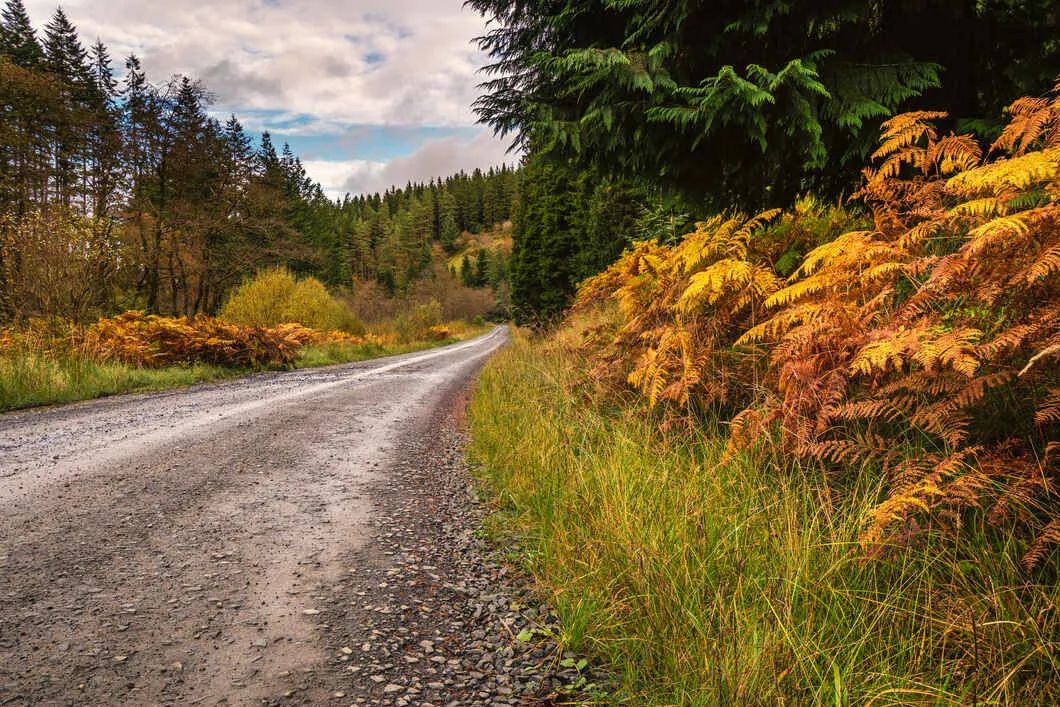
Kielder Forest is actually a man-made woodland. Covering 250 square miles, the forest is the largest working forest in England.
The forest is packed with things to do, such as cycling and mountain biking, fishing and geocaching. If you’re a wildlife enthusiast, then Kielder won’t disappoint – the forest is also home to England’s largest remaining population of red squirrels, as well as Northumberland’s only breeding osprey population.
The forest is known for some of the darkest night skies in England, and there are evening stargazing tours that you can take. If you’re not a night person, then there are plenty of trails that you can do during the day.
Hindhope Linn is a stunning waterfall, and you can access the trail through the forest, overlooking Blakehope Burn. The Tarset Bastle Trail is named after the chaotic history of the Border raider days.
The trail passes five bastles, which are fortified farmhouses that were built as protection against raiders in the 16th and 17th century.
The Sidwood Trail is a short route that goes past the site of the former Sidwood House, passing through conifer crops and open grassland. Other walks in the forest include the Walksburn Walking Trail and the Lakeside Way.
Website: https://www.visitkielder.com/visit/know-before-you-go
Cost: Daily parking is £5 and to park overnight is £10. The park is free to enter.
8. Wistman’s Wood, Devon
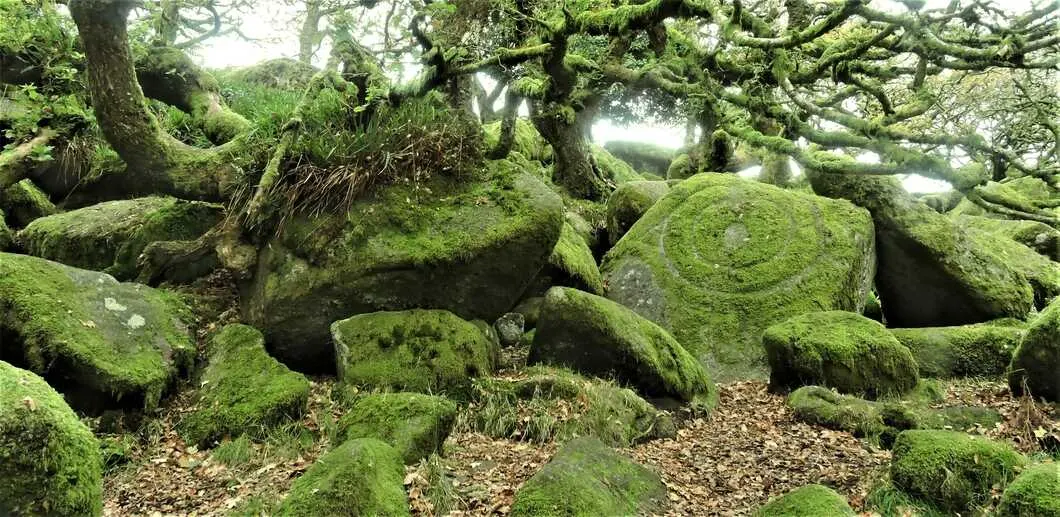
Wistman’s Wood looks exactly like it came out of a fairytale. Moss-covered boulders and twisted, lichen-covered trees give the forest an enchanted, mystical feel, and has often been the centre of supernatural stories. It’s one of the highest oakwoods in Britain and is also an SSSI.
Wistman’s Wood Walk is a circular walk starting at a car park near the Two Bridges Hotel.
The footpath leads up to Longaford Tor, which offers panoramic views over Dartmoor. The trail then passes Littaford Tor and Crockern Tor, which are large rock outcrops.
Lych Way is another route that passes through Wistman’s Wood, and is an ancient footpath dating back to medieval times.
Another trail is the Two Bridges Dartmoor Walk, which is a circular walk that passes through Wistman’s Wood before heading to Bellever Forest.
Website: https://www.visitdartmoor.co.uk/things-to-do/wistmans-wood-p224413
Cost: No cost.
9. Forest of Dean Sculpture Trail, Gloucestershire
The Forest of Dean is a sprawling area of woodland covering more than 42 square miles.
It is one of the oldest woodlands in England, and a large part of it was used as royal hunting grounds before 1066.
The forest is teeming with wildlife and is particularly known for its birds. There is a large population of peregrine falcons which can be seen from Symonds Yat rock. Mandarin ducks and reed warblers can also be found at Cannop Ponds.
There are numerous walks covering different parts of the forest. Although quite challenging, some of the best views are on the Lancaut Loop, which involves steep limestone cliffs and narrow ledges by a river drop. For an easier trail, try the Daffodil Way, which is a scenic circular way passing through woodland, meadows, ponds and streams.
One of the most well-known walks in the Forest of Dean Sculpture Trail. The trail links a collection of 16 sculptures which were commissioned for the forest in 1986.
The entire trail is 4.5 miles long, but there are shorter options at 2.2 miles and 3 miles which only pass a selection of the sculptures. One of the highlights of the sculptures is ‘Cathedral’, a 15-foot stained glass window hanging from the trees.
Website: https://www.wyedeantourism.co.uk/sculptrail
Cost: Entry is £1.
10. Puzzlewood, Gloucestershire
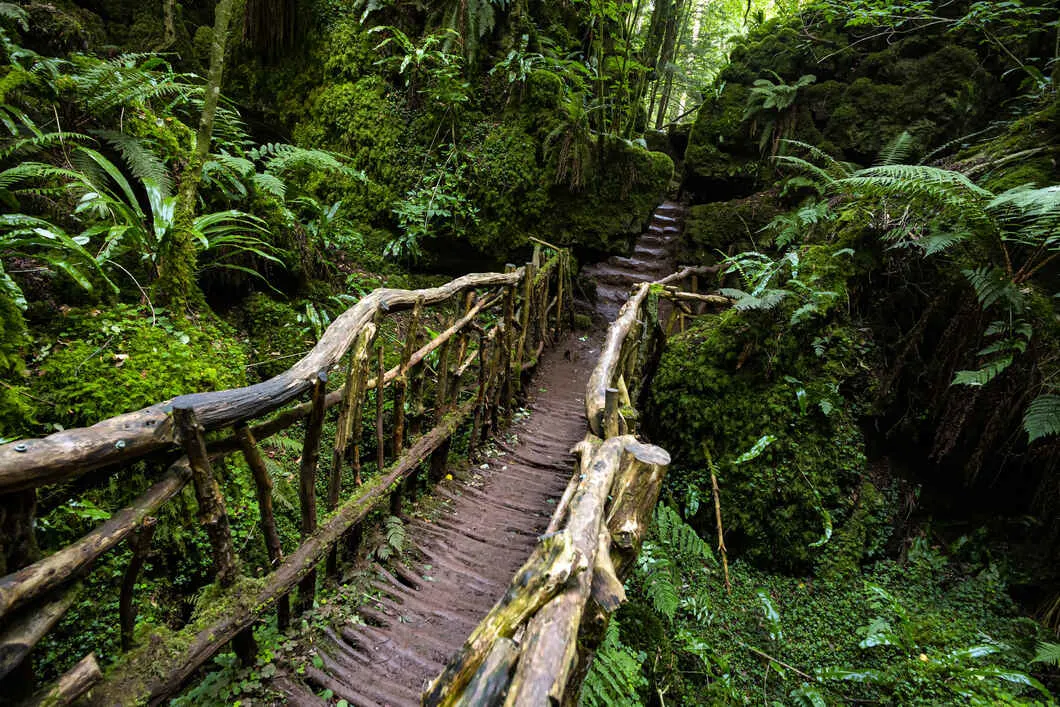
Not far from the Sculpture Trail is Puzzlewood, also located in the Forest of Dean. With pathways winding through moss-covered boulders, charming wooden bridges and knotted tree formations, it’s easy to see why Puzzlewood has a magical atmosphere.
It’s believed that JRR Tolkien drew inspiration from Puzzlewood for his novels The Hobbit and Lord of the Rings. The forest has also been used as multiple film sets, including Merlin, Doctor Who and Star Wars.
Puzzlewood is a great place for a family stroll. There are plenty of meandering pathways to follow, which were laid down in the early 1800s.
Little has changed since then, and the same pathways still exist. As you make your way through the forest, look out for secret caves and peculiar rock formations along the way.
Website: https://www.puzzlewood.net/
Cost: Prices are based on ages groups, see below:
- Adult: £7(concessions £6)
- Child aged 3-16: £6 (concessions £5)
- Child aged 2 and under: Free
- Family (2 adults and 2 children): £25
11. Wandlebury Country Park, Cambridgeshire
Wandlebury Country Park is a gorgeous countryside estate on the Gog Magog Hills, just south of Cambridge. There are eight miles of marked trails that lead you through 110 acres of woodland and lush meadows, which are home to grazing Highland cattle.
To the north of the park, you’ll find Beech Avenue, a 400 metre long avenue of beech trees that lead to a historic Roman road. To the south you can take in the views of Magog Down, which are a range of low chalk hills.
The park is a very family friendly place, and there are plenty of things to see and do to keep kids entertained. There is a den building area, a games field and a wildlife viewing hide.
Wandlebury Country Park is seeping in history, and the park isn’t short of historic buildings. Look out for the Tadlow Granary, an agricultural building from the 15th century, as well as the remains of a 5th century Iron Age Hill Fort.
Website: https://www.cambridgeppf.org/wandlebury-visit
Cost: Entry is free but car parking charges of £3 apply.
12. Hardcastle Crags, West Yorkshire
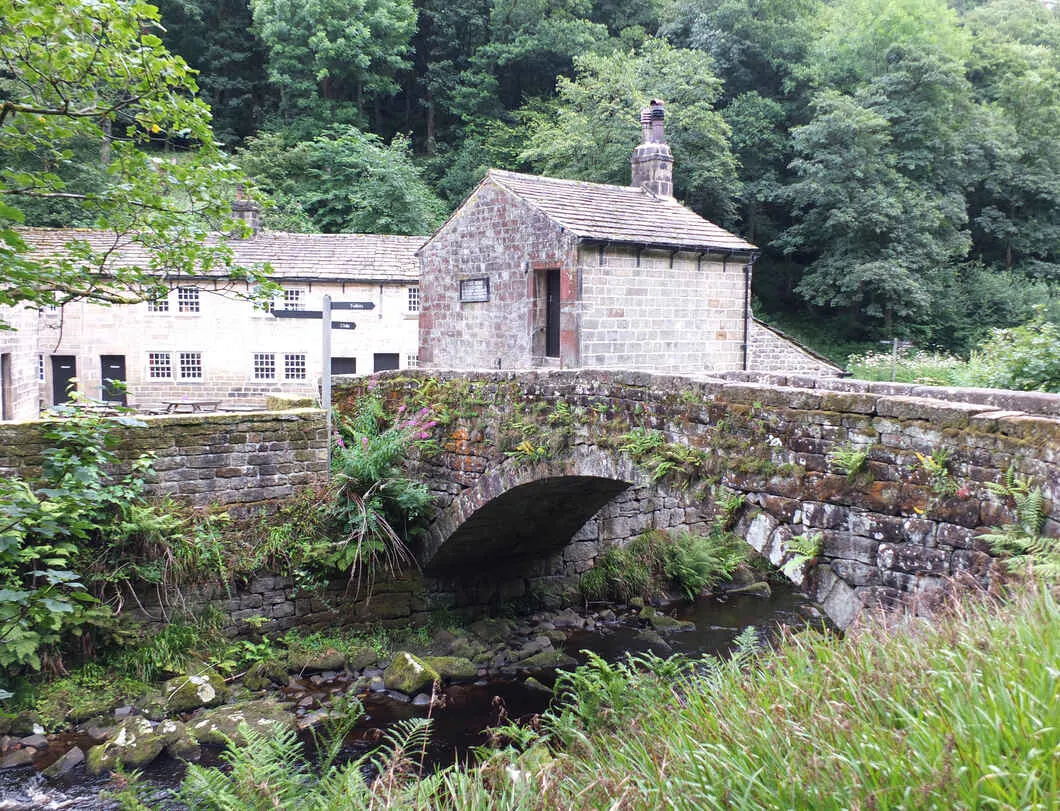
Once nicknamed the ‘Switzerland of Yorkshire’, Hardcastle Crags is a beautiful woodland valley two miles north of Hebden Bridge.
The area is full of rocky ravines, trickling streams and stunning waterfalls. Within the valley you’ll find a 19th century cotton mill named Gibson Mill. This is a former cotton mill which is now an environmentally self-sustaining visitor centre, and you can even take guided tours to learn more about its history.
The valley was also home to the Blake Dean Railway, but this was disassembled in 1912. You can still see the foundations of the railway on one of the trails.
There are over 15 miles of footpath to explore in Hardcastle Crags. The Railway Trail leads you through woodland and into the upper valley for panoramic views over the moorlands.
The Mill Walk has two options depending on your ability. Either follow the higher paths for a more challenging route, or follow the riverside path for a more laid back stroll.
Crags Constitutional Walk follows the valley upstream from Gibson Mill. You’ll pass by mill ponds and weirs before reaching The Crags. These are rocky hills, and there are stunning views of the valley from the top.
Website: https://www.nationaltrust.org.uk/hardcastle-crags
Cost: No cost.
13. Ashdown Forest, East Sussex
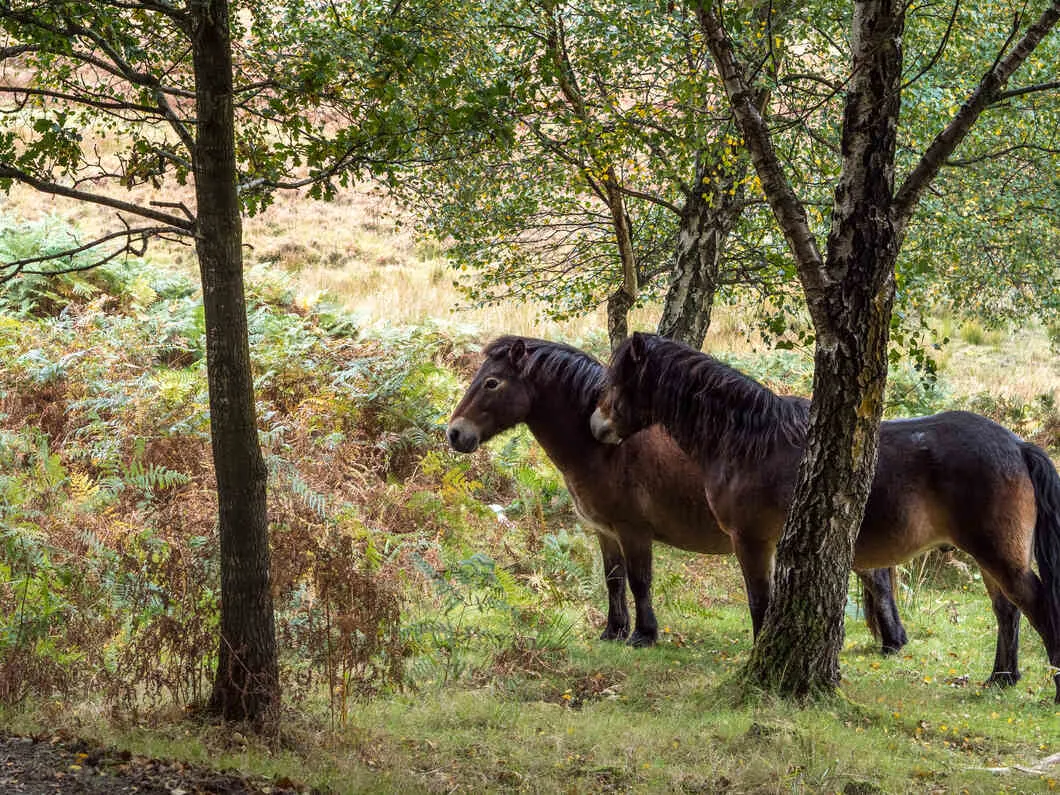
Ashdown Forest was AA Milne’s inspiration for the Five Hundred Acre Wood, home to Winnie the Pooh and his friends.
There are even Pooh-related sights to see in the forest, including the Poohsticks bridge, Roo’s Sandpit and the Heffalump trap. This area has a history that can be traced back to the medieval times, when it was used as a hunting forest shortly after the Norman conquest of England.
Today, it covers 9.5 square miles of land – the largest area of land with public access in South East England. Ashdown Forest’s heathlands are an SSSI, a Special Protection Area for birds and a Special Area of Conservation, so there is plenty of flora and fauna to see here. Keep an eye out for different species of deer and woodland birds.
The forest is extremely popular with walkers and has miles of paths to take. There are two long distance routes which are quite popular – the Vanguard Way and the Wealdway which runs from south to north.
These paths cross through the forest before meeting near Old Lodge Nature Reserve. Other walks include Southern Slopes and the Airman’s Grave, Chelwood Vachery, the Old Airstrip and Broadstone Amble.
Website: https://www.ashdownforest.org/home/index.php
Cost: No cost.
14. Foxley Wood, Norfolk
Foxley Wood is a nature reserve in Foxley, and at 300 acres, it is the largest remaining area of ancient woodland in Norfolk.
Foxley Wood is mentioned in the Domesday Book, and some areas of the woods are over 6,000 years old. Foxley Wood is an SSSI, a Nature Conservation Review site and a National Nature Reserve.
The area is particularly rich in flora, and has over 250 recorded species including lily of the valley and early purple orchid. During the spring, visitors flock to the area to see the bluebells which take over the woods.
There are also tons of woodland birds, including the great spotted woodpecker and the treecreeper.
For the past 1,000 years, the area was used to harvest wood. However when the demand dropped in the 20th century, it became unused.
The paths that were used for moving the chopped down wood still exist today, and they criss cross throughout the forest.
You can also take the circular walk, which is a 2.8 mile loop which is easy for all levels.
Website: https://www.norfolkwildlifetrust.org.uk/wildlife-in-norfolk/nature-reserves/reserves/foxley-wood
Cost: No cost.
15. Hamsterley Forest, Durham
Hamsterley Forest is the largest forest in Durham, covering over 4,900 acres. This area of broadleaved and coniferous woodland is spread along the sides of a picturesque valley. It’s a great spot for recreational activities like cycling, walking, horse riding and mountain biking.
These activities are mostly centred around the eastern end of the forest where the visitor centre, tea rooms and play area are located.
There are four fantastic walking trails to choose from, all of them offering the chance to spot wildlife. If you head out in the early morning, you might be lucky enough to see salmon leaping upstream, roe deer, and even adders.
The Bedburn Valley Walk is a moderate, short circular walk which takes you through oak woodland. The Riverside Trail is a family friendly route that even the little ones in pushchairs can enjoy. It takes you along the tranquil banks of the Bedburn Beck to Low Redford.
For a quieter walk, take on the Spurlswood Valley Walk which stretches for 4.5 miles. The Three Becks Walk is the longest of the four, but is also the most scenic one. It’s extra beautiful in the autumn, when all the beech and birch trees turn into a sea of yellow and red.
Website: https://www.forestryengland.uk/hamsterley-forest
Cost: You will need to pay for parking which is
- Up to 1 hour £2
- All day £6
- Bank Holidays £10
England is a fantastic place to get outdoors. All around the country are spectacular forest walks, each of them offering something different. According to Forest Research, 10% of England’s land area is covered by forest – this is over 8,000 miles of nature and woodlands to explore.
It’s a great way of staying fit and healthy, and getting outdoors can drastically improve your mental and physical health. With plenty of options wherever you are in the country, you’re bound to find a trail that’s right for you.

Kat
Hi, I'm Kat, an Australian that moved to London in 2013 to start a new adventure. What a roller-coaster that was! I love helping others move to the UK and people explore the world! I’d be honoured if you’d say, “Thanks!” with a £3 coffee on Ko-fi.

